|
The 1972 Italian crime thriller Milano Calibro 9 (also known as Calibre 9) has the sort of opening that is clearly designed to grab your attention. A parcel is passed from person to person in a manner that informs us that it probably contains something on the wrong side of legal. It ends its journey in the hands of mob hard man Rocco (Mario Adorf – imagine Al Lettieri but built out of bricks) and his scar-faced partner Pasquale (Mario Novelli). When they open the package, the $300,000 that was supposed to be in it has been replaced by sheets of banknote-sized blank paper. Rocco is furious and sets about visiting three of those involved in the chain in an effort to find out where the money has gone. The first one gets punched repeatedly in the stomach whilst a pillow is held over his face to stifle his screams, the second – a woman – is slapped six ways from Sunday, and the third has his face sliced up with a razor. All three are then transported to a remote hilltop cave, tied together in a manner that pulls their mouths open, and sticks of dynamite are placed ominously behind their backs. Rocco and Pasquale then retire to a safe distance and blow them all to pieces. Bloody hell, are these guys bad news.
Three years later the stone-faced Ugo Piazza (Gastone Moschin, an actor formerly known for his comedy roles) is released from prison as part of a general pardon and has only walked a few yards before he's intercepted by Rocco and his boys. They're convinced it was Ugo that stole the $300,000, and they're not buying his claim that he had nothing to do with its disappearance. As it turns out the missing dosh belongs to a white-haired criminal kingpin (a splendidly cast Lionel Stander) named The Americano on the Italian language track and The Mikado on the English one, and he has every intention of getting it back.
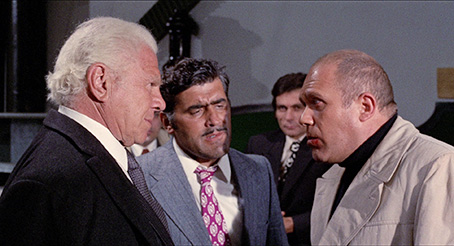
When Ugo ignores a demand that he meet with The Americano the following day, he receives a second visit from Rocco and Pasquale, who tear up his hotel room and insist that the owner charge Ugo for the damage. Now getting a little concerned for his wellbeing and in need of some cash, he drops in on his former partner in crime Chino, whose time is now spent taking care of blind ex-mob boss Don Vincenzo. Ugo's looking for a little protection, but Chino's reluctant to get involved in a war with The Americano and his small army of hoods. He's happy, however, to give Ugo the money he needs to pay his inflated hotel bill. At that very moment Rocco and the boys make a noisy entrance, snatch the money from Ugo and tear it in half. Chino's not happy, and when a fight breaks out between him and Rocco's men, Ugo finally snaps out of his stoic shell and wades in to help him. Then something rather interesting happens. Chino tells Rocco his name and demands that he repay Ugo the torn up money from his own pocket, and after some awkward protestation, Rocco complies. It makes you wonder just what it is about Chino's reputation that would humble even this semi-psychotic brute.
Not wanting to push his luck too far, Ugo keeps his next appointment with The Americano and is told in no uncertain terms that he'll now be working for Rocco. It's not that they particularly value his skills, it's just they're still convinced he has the stolen cash squirrelled away somewhere and thus want to keep a close eye on his movements. Also keeping tabs on him is a shouty and fascistic police commissioner (Frank Wolff, looking a little like Paul Eddington's cousin) and his more progressive colleague Mercuri (Luigi Pistilli), whose left-wing views the commissioner very publicly mocks. Ugo, meanwhile, finds solace in the company of his former girlfriend Nelly (Barbara Bouchet), an exotic dancer who still appears to dote on this inexpressive ex-con.
I've seen Milano Calibro 9 described as a 'gothic crime noir', which sounds about right. Rougher around the edges and more direct in its brutality than the American crime movies of the period from which it draws inspiration, it initially keeps its noir credentials close to its chest, playing out instead in sunlit exteriors and brightly lit rooms. But following a mother of a climactic shoot-out, it lets rip with a couple of neat twists designed to wind up the audience and then slap them soundly in the face.
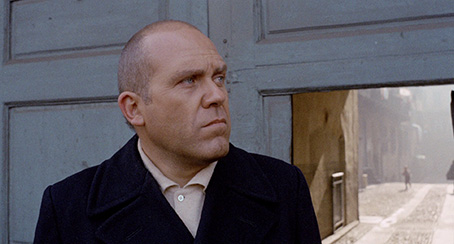
As the taciturn Ugo, Gastone Moschin makes for a quietly compelling antihero, having the appearance and demeanour of a background heavy who has just found himself moved up to the lead. His refusal to reveal just what is ticking away beneath that stony surface lends him considerable enigmatic appeal, which is tempered a little by his initial reluctance to help out when Chino takes a beating for standing up for his old friend. And he's clearly capable of dishing out a serious smack, as the poor sod who tries to stop him going up to Nelly's apartment finds out to his considerable cost.
Quite where all this is heading is not initially clear, but as the story unravels it emerges that some fates were sealed at an early stage, and that acts of violence have a knock-on effect that is destined to escalate in scale and severity. Chance plays a hand here, and I did wonder what would have happened to Ugo had the cards not fallen the way that they later do. I guess we wouldn't have had this film, at least in this form, and that would have been a serious shame. Milano Calibro 9 is a cracking little noir-tinged crime movie, one whose hard-nosed aggression and nut-busting violence prove to be dark rewards in themselves, but are so integrated into the fabric of the film that you just know it would feel somehow naked without them. Brutal, surprising, tightly structured, deliciously cast and driven along by a full blooded score by Luis Enríquez Bacalov – one that effortlessly glides between prog rock and classical – it's a hard-nosed treat that leaves you itching to see the other two films in Di Leo's Milieu trilogy.
Scanned from the original camera negative by Immagine Ritrovata in Bologna and graded and restored by Deluxe in London, this is another sizeable feather in Arrow's increasingly awe-inspiring restoration headdress. The image is clean, the contrast sublimely pitched and the colour naturalistic, with some brighter colours – the red of a night club wall, the vivid yellow of a phone box – really popping from the screen. The picture detail is wonderfully crisp, allowing you to fully appreciate the lovely location work of cinematographer and Di Leo regular Franco Villa. Film grain is visible, particularly on some of the landscape shots, but it always feels natural. An absolutely bang-up job.
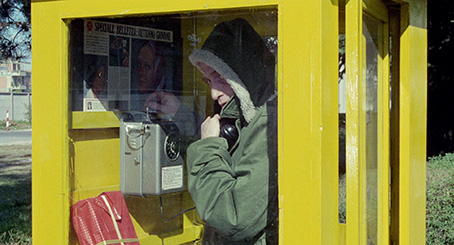
There's a choice of soundtracks between English and Italian dubs, and yes they're both post-dubbed, a standard practice in Italian films for a good many years. Now while the Italian language track may seem to be the more authentic of the two, the English language track fits the mouths of the actors like an audio glove, something especially evident when the actors are in close-up. But here's the thing. Switch to the Italian language track and watch the same sequence again and much of this track also matches the actors' mouths. There are moment on both tracks where a mismatch is clearly visible – more often on the Italian track if the truth be known (I'm willing to bet that Mario Adorf, Frank Wolff and Lionel Stander performed their dialogue in English) – but there are many times when they both seem to line up perfectly. How is this possible? To get an idea, try playing the English language track with the optional English subtitles switched on and you'll soon realise that the dialogue is often very different on both tracks, the English having been modified from the Italian to better match the movements of the actors mouths. On that score at least, it's a hell of a job, and while lines do vary between the dubs, often quite markedly, the spirit of the piece has not been betrayed. Both tracks are Linear PCM 2.0 mono and both have the expected range restrictions, but the Italian track is noticeably louder and background sounds that are barely detectable on the English track are more clearly audible here.
The Making of Milano Calibro 9 (29:43)
As with a number of the extra features here, this appears to have been made for an earlier Italian DVD release of the film (it's in Italian, framed 4:3 and the graphics are basic). Director Fernando Di Leo, producer Armando Novelli, editor Amedeo Giomini, composer Luis Bacalov and actors Philippe Leroy and Barbara Bouchet recall the making of the film, and filmmaker Franco Lo Cascio and a sprinkling of writers chip in with an appreciation of its qualities. Was intrigued to learn that cuts were enforced because the violence was originally even stronger than it is on the release print, and that Di Leo's key influences were John Huston and Jean-Pierre Melville. Plenty of interest here.
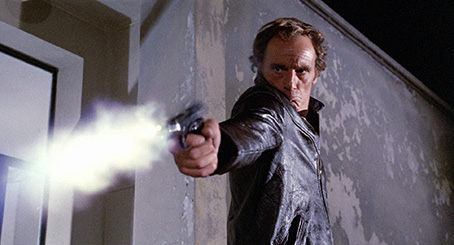
Di Leo: The Genesis of the Genre (39:13)
A documentary charting filmmaking career of Fernando Di Leo, a companion piece to the above and built around an interview with Di Leo, with contributions from some of his past collaborators. Di Leo takes you through his film career, from his early work on a quartet of key western scripts (including a trend-setting pair of Sergio Leone films that I shouldn't have to name) through to his extensive work as a director. There's quite a bit on his handling of female characters, during which he makes some rather sweeping statements about female sexuality that I would imagine a few will take issue with. Enjoyable nonetheless, and we do get a quick taste of a chase sequence that is given a tantalising mention in another extra below.
Scerbanenco Noir (26:11)
A look at the work of Italian crime writer Giorgio Scerbanenco, author of the original Milano Calibro 9 novel. This was clearly shot at the same time as the above making-of video and is comprised of interviews with the same collection of writers. If you're new to Scerbanenco's work, and particularly if you have a fondness for crime fiction (oh yes), then this is an informative and seductive extra that is likely to leave you aching to get your hands on his noir crime novels. The high regard in which he was held can be gauged by the fact that he left three of his Duca Lamberti novels unfinished, and when his widow invited a number of respected writers to complete them, all declined because they didn't think they would be up to the job.
Gastone Moschin Audio Interview (3:28)
In a brief and crackly but still welcome telephone interview, lead actor Gastone Moschin reveals that he was happy to do a film that offered him a distinct change from the comedy roles for which he was previously known, and tells us how he got burned by an explosive squib on set.
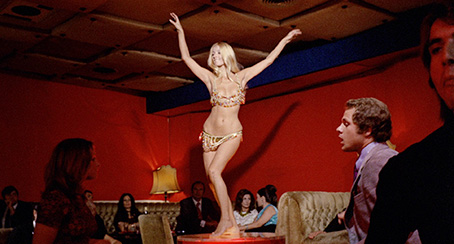
Italia Violenta (17:38)
Writer and actor Matthew Holness offers up an appreciation of Milano Calibro 9 and the Italian poliziottesco sub-genre in general. Specifically shot for this release, it's a most worthwhile piece, largely because Holness himself is is so interesting and so gently passionate for his subject. He does whet our appetite for the second film in the Milieu trilogy, La mala ordina (aka The Italian Connection), by assuring us it contains the best car chase in all of Italian crime cinema. Sounds like Arrow have been given a nudge there. Major spoilers here, so don't watch this just before the film.
The US Trailer (3:15) is a bumpily assembled piece that highlights the violence but does suggest there's more to the film than punch-ups and shootouts. The Italian Trailer (3:16) is essentially the same cut but with a few minor alterations and Italian dialogue. I'm guessing this one came first.
There's also 24-page colour Booklet, the centrepiece of which is an interesting essay by Roberto Curti on the film, director Fernando Di Leo and novelist Giorgio Scerbanenco entitled Film Noir, Italian-Style. Also included are the essential credits, notes on the restoration and some nicely reproduced stills.
A better (or more brutal) introduction to the violent world of Italian noir crime thrillers you'd be pushed to find. The film looks absolutely boffo on the Blu-ray in Arrow's dual format release and sports the sort of thoughtfully chosen collection of extra features that has become an Arrow signature in recent years. A well done English dub even makes it easily accessible for the subtitle phobic. Enthusiastically recommended. Any chance of La mala ordina and Il boss in the near future?
|